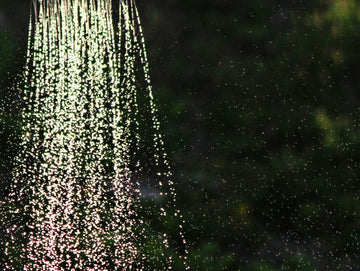Camping off-grid is an exciting way to be close to nature without giving up all your comforts. Solar and wind power can help you stay connected to the modern world while enjoying the outdoors.
In this guide, we’ll explore how you can harness these clean energy to power your campsite sustainably. Solar and wind energy can help you stay connected and comfortable. They can charge your smartphone, power a light at night, or even run a small fridge. Join us as we dive into the essentials of using solar panels and wind turbines in the great outdoors!
Understanding Off-Grid Camping
Definition and Benefits
Off-grid camping means setting up camp in remote locations without access to mainstream electrical power grids. This type of camping encourages self-sufficiency and a deep connection with nature.
Off-grid camping has many benefits. It provides peace and solitude away from busy campsites. It offers a genuine outdoor experience.
It is also a great opportunity to learn and use sustainable living skills. It also helps the environment by reducing the use of fossil fuels and promoting renewable energy sources.
Challenges and Solutions
However, off-grid camping comes with its set of challenges, primarily related to energy supply. It can be hard to keep devices charged without traditional power sources. This includes essential equipment such as GPS units, lights, and refrigeration. The solution lies in using portable energy solutions such as solar and wind power.
Solar panels, solar generators, and wind turbines designed for portability can be invaluable. They not only provide renewable energy but also ensure you remain connected and safe. Planning is crucial, as is understanding the duration of your stay and energy needs.
Harnessing Solar Power for Off-Grid Camping
Solar Panels: Types and Installation
People commonly use solar panels for off-grid camping because they efficiently generate energy and are easy to use. There are two main types suitable for camping: monocrystalline and polycrystalline solar panels.
Monocrystalline panels work well in low light and are great for camping in different places due to their efficiency. Polycrystalline panels, however, are generally more affordable.
To set up these panels at your campsite, just put them in a sunny spot. To set up these panels at your campsite, find a sunny spot.
You can place them on the ground, on an RV, or hang them from a tree. Just make sure they are facing the sun. Ensuring they are secure and have an optimal angle towards the sun for maximum energy absorption is essential.
Solar Generators: Features and Benefits
Solar generators or portable power stations are another excellent tool for off-grid camping. They store the energy collected by solar panels and can power multiple devices simultaneously. Features to look for include high battery capacity, multiple output types (USB, AC, and DC), and quick recharge capabilities.
Solar generators have many benefits, such as being quiet, emitting no pollution, and storing power for nighttime use. Solar generators come in various sizes, so choosing one that fits your power needs and storage capabilities is crucial.
Solar Chargers: Portable Options for Devices
For those who need to power smaller devices like smartphones, tablets, and cameras, solar chargers are convenient. These portable devices are light and users can easily attach them to backpacks or place them in sunny spots at the campsite. They typically come with built-in USB ports for direct charging and are simple to use.
Some advanced models have built-in batteries that store solar energy. This is helpful for charging devices at night or on cloudy days. Look for models with durable designs and water-resistant properties to ensure longevity and reliability in various outdoor conditions.
Utilizing Wind Power for Off-Grid Camping
Wind energy, commonly harnessed via wind turbines, can be an excellent renewable power source while camping off-grid. Let's dive into the mechanics of wind turbines and the specifics of mobile wind generators.
Wind Turbines: How They Work
Wind turbines convert wind energy into power, which they use to generate electricity. In this process, wind spins the turbine blades, which then turn a generator to make electricity. Even in windy places, a small turbine can make energy to charge camping items like lights and small appliances.
Portable Wind Generators: Features and Considerations
For off-grid camping, portable wind generators offer a viable solution to energy needs. These units are typically lighter, easier to transport, and quicker to set up than traditional wind turbines. When selecting a portable wind generator, consider the following:
- Output Capacity: Ensure the generator meets your energy requirements.
- Size and Weight: Opt for a model that balances portability with power output.
- Ease of Installation: Look for models that require minimal time and effort to set up.
- Durability: Choose a unit designed to withstand outdoor environments, including variable weather conditions.
Combining Solar and Wind Solutions for Maximum Efficiency
For reliable energy while camping, use both solar panels and a wind generator. This works well in places with changing weather. This hybrid approach ensures that you have power, whether it's sunny or windy. Solar panels charge in the sun, while wind generators work in windy conditions at night or on cloudy days.
Essential Gear for Sun and Wind Energy Solutions
To optimize your use of solar and wind energy while off-grid camping, you need the right accessories. This includes batteries for energy storage, inverters for converting power into usable electricity, and power management systems.
Batteries: Types and Storage Tips
Batteries are crucial for storing the electricity generated by your solar panels and wind turbines. The most common types include:
- Lead-Acid Batteries: These are economical but require regular maintenance and are heavier.
- Lithium-Ion Batteries: Though more expensive, they are lighter, have a longer lifespan, and require less maintenance.
Keep batteries in a cool, dry place and avoid extreme temperatures to make them last longer.
Inverters: Functions and Selection Tips
Inverters are necessary for camping. They convert the DC electricity stored in batteries into AC power. This is the type of power that camping appliances require. When choosing an inverter, consider:
- Power Output: It should match or exceed the total wattage of all devices you plan to use.
- Efficiency: Look for inverters with high efficiency to maximize the power output from your stored energy.
- Safety Features: Opt for inverters with protective measures such as overload protection and automatic shut-off.
Power Management Systems: Importance and Features
A power management system efficiently monitors and distributes energy to control its usage from power sources. Key features include:
- Energy Metering: Keeps track of energy production and consumption to efficiently manage power use.
- Load Control: Automatically turns off less critical systems to preserve power for essential needs.
- System Protection: Protects against issues like overcharging or voltage spikes, thus prolonging system life.
When camping, use these tools and methods for a convenient, efficient, and environmentally friendly energy source. This way, you can have power wherever your adventures take you.
Practical Tips for Off-Grid Energy Management
Managing energy efficiently is crucial when utilizing portable solar and wind power sources during off-grid camping. Effective management not only ensures a continuous power supply but also extends the lifespan of your equipment.
Energy Conservation Techniques
To maximize your energy resources while camping, consider the following tips:
- Prioritize energy usage: Operate only the most necessary devices, such as navigation tools and safety gear.
- Use energy-efficient appliances: Opt for LED lights, eco-friendly portable fridges, and low-power cooking devices.
- Use more energy during the day when solar panels produce the most power. Charge devices and do other activities that need electricity during this time to make the most of solar energy.
- Keep your camping area comfortable: Insulated tents or cabins help maintain temperature, reducing the need for heaters or AC.
By implementing these techniques, you can significantly reduce your energy consumption while off the grid.
Safety Measures for Solar and Wind Systems
To ensure safety and functionality, adhere to the following guidelines when handling portable solar panels and wind turbines:
- Securely install solar panels and wind turbines to withstand weather conditions such as high winds and rain.
- Regular inspections: Check for any loose connections, potential corrosion, or debris that might hinder performance.
To avoid water damage, position your system components to prevent water buildup. Water buildup can lead to short circuits and other damage.
Remember to keep batteries in cool, dry areas and away from sunlight to avoid overheating.
Adhering to these practices will help guarantee a safe and reliable energy supply during your camping trip.
Maintenance Tips for Long-Term Sustainability
Maintaining your portable energy systems is key to ensuring their longevity and reliability:
- Clean solar panels and wind turbines regularly to remove dirt and debris which can block sunlight or reduce efficiency.
- Check battery terminals for corrosion and clean them periodically with a brush and appropriate cleaning solution.
- Tighten loose screws and replace worn-out components as needed.
- Follow manufacturer guidelines for specific maintenance schedules and procedures.
Regular maintenance helps equipment last longer and work better. This means you can stay powered up for all your adventures.
Case Studies: Successful Off-Grid Camping Setups
Studying successful off-grid camping setups can help campers use solar and wind energy better. Here are a couple of examples:
- A family upgraded their camping trailer with small solar panels and a powerful battery for a solar-powered retreat. This system powered lights, small devices, and charging stations during their two-week trip in a remote forest.
-A camper used a portable wind turbine and small solar panels to explore windy highlands alone. The turbine helps when it's not sunny, working with solar power to keep navigation and communication devices running smoothly.
Solar and wind portable power options can provide reliable energy for camping in remote locations. These options do not require access to traditional power sources. Solar panels and wind turbines generate electricity in areas without electricity infrastructure. This allows campers to have a source of power for their electronic devices and appliances.
Conclusion: Embracing Sustainable Power Solutions for Off-Grid Camping
Off-grid camping doesn't have to mean going without the modern conveniences that electricity can offer. Add portable solar and wind energy to your camping gear for a sustainable adventure. Keep your devices charged and ready for use.
Remember, the key to successful off-grid power is planning and choosing the right equipment for your energy needs. Solar panels and wind turbines are great for the environment and perfect for outdoor lovers who want to lessen their impact.
They are eco-friendly options that can help minimize harm to the environment. These technologies are perfect for those who enjoy spending time outdoors and want to be more environmentally conscious. Embrace these sustainable power solutions and make your next camping trip both enjoyable and eco-friendly!




